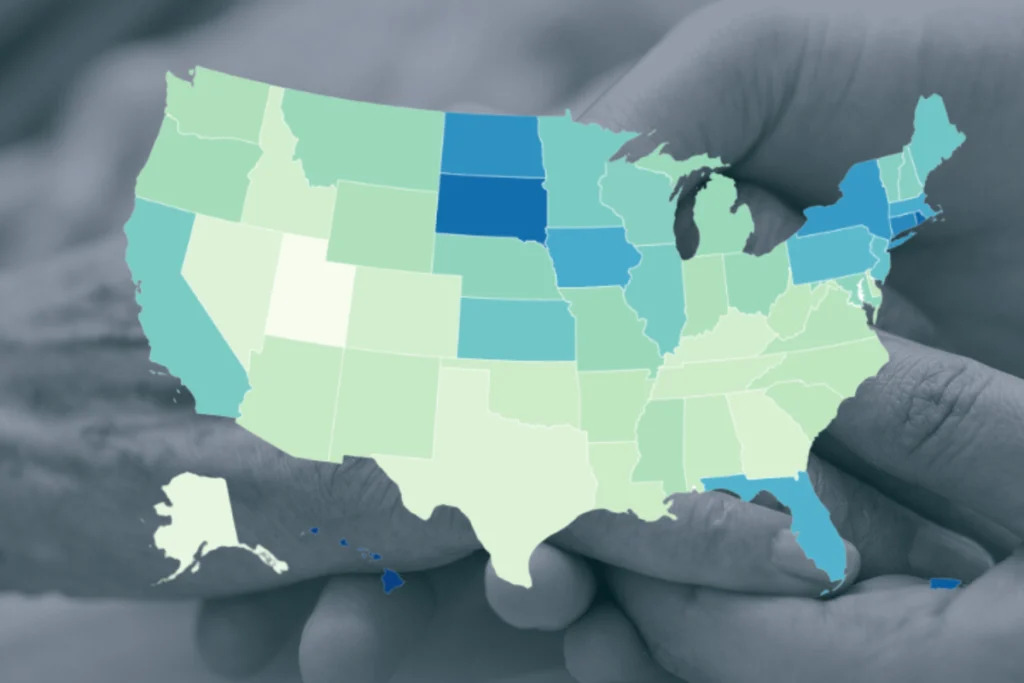America’s Centenarian Boom: Mapping the Path to 100
The United States is experiencing a remarkable longevity revolution, with the number of Americans living beyond their 100th birthday surging to more than 80,000 according to recent Census Bureau data. This represents a stunning 50% increase in just one decade, fundamentally changing our understanding of what human lifespan can be. However, this longevity boom isn’t distributed evenly across the country. Some states have emerged as hotspots for exceptional aging, while others lag significantly behind. This geographic disparity offers fascinating insights into the environmental, cultural, and lifestyle factors that might help more of us reach this once-rare milestone.
Hawaii stands as America’s undisputed longevity capital, boasting 44.4 centenarians per 100,000 residents—a rate nearly double the national average. Close behind is Puerto Rico with 41.4 centenarians per 100,000 people. What makes these tropical locales such fertile ground for long life? Both share several distinctive characteristics: warm, sunny climates that encourage year-round outdoor activity; strong cultural emphasis on family bonds and community connection; and traditional diets rich in fresh plants, fish, and seafood. These elements create what researchers might call a “longevity ecosystem”—environments where the daily patterns of life naturally support healthy aging. Other states showing impressive centenarian concentrations include Connecticut (36 per 100,000), Rhode Island (39.7 per 100,000), and somewhat surprisingly, South Dakota (38.7 per 100,000), suggesting that the formula for exceptional longevity may be more complex than simply living in a warm climate.
The states with the fewest centenarians per capita tell an equally interesting story. Alaska (12.8 per 100,000), Texas (15.2 per 100,000), and Utah (10.4 per 100,000) anchor the bottom of the list. Utah’s position is particularly intriguing given the state’s well-documented overall life expectancy advantages, indicating that reaching 100 may require different factors than simply living into one’s 80s or 90s. When measuring by raw numbers rather than rates, population size becomes the dominant factor. California leads with 10,623 centenarians, followed by New York (6,921) and Florida (6,580)—all states with large overall populations. Yet their density rankings fall below smaller states like Hawaii and Rhode Island, highlighting how per-capita measurements provide a clearer picture of which environments might best support extreme longevity.
The patterns emerging from America’s centenarian map show striking parallels to what researchers have observed in global “blue zones”—regions first identified by explorer Dan Buettner where unusually high percentages of people live past 90 or 100. The original five blue zones—Ikaria (Greece), Loma Linda (California), Nicoya Peninsula (Costa Rica), Okinawa (Japan), and Sardinia (Italy)—revealed common lifestyle patterns despite their geographic diversity. These included predominantly plant-based diets with moderate calorie intake, regular natural physical activity integrated into daily life, strong family bonds and social connections, sense of purpose, moderate alcohol consumption (usually wine), and stress-management practices often tied to spiritual traditions. Hawaii, Puerto Rico, and certain California communities share many of these characteristics, suggesting that the blue zone framework may help explain America’s longevity hotspots.
What makes the centenarian phenomenon particularly fascinating is how it challenges our assumptions about aging. While reaching 100 was once considered almost miraculous, we’re now seeing entire communities where becoming a centenarian is increasingly common. The Census data shows that women continue to dominate the ranks of the oldest Americans, comprising nearly 79% of the centenarian population. However, men are slowly gaining ground, with their share increasing slightly since 2010. This gender gap reflects complex biological and social factors, including women’s generally stronger immune systems and men’s historically higher rates of dangerous occupations and risk-taking behaviors. As gender roles have evolved and medical care has improved, the gap has begun to narrow, though women still maintain a significant longevity advantage.
The rapid growth of America’s centenarian population represents both a triumph and a challenge for our society. On one hand, it demonstrates the remarkable success of public health measures, medical advances, and improving lifestyles. On the other, it requires us to reimagine everything from retirement planning and healthcare systems to housing design and community structures. The geographic patterns revealed in the Census data offer valuable clues for this adaptation process. States with high centenarian concentrations may provide templates for creating environments that support not just longer lives, but healthier and more fulfilling ones. As researchers continue studying these longevity hotspots, we may discover that the path to reaching 100 involves not just individual choices but community-wide factors that make healthy choices easier and more natural. For individuals hoping to join the centenarian ranks, the lesson seems clear: where and how you live matters just as much as your genetic lottery ticket, suggesting that many of us may have more control over our longevity destiny than we previously thought.















